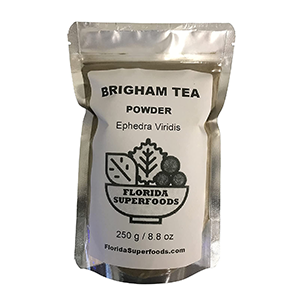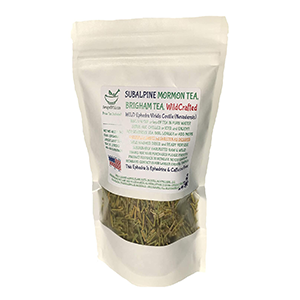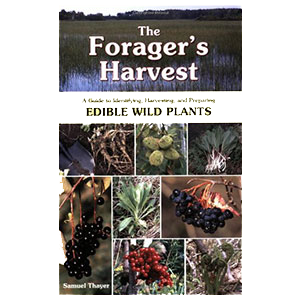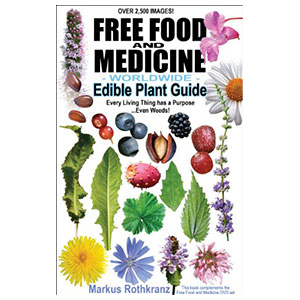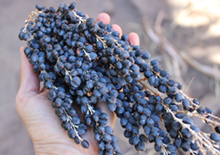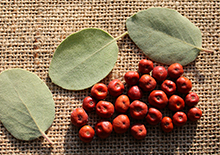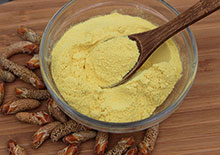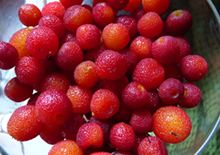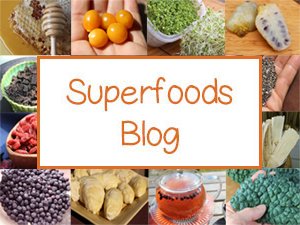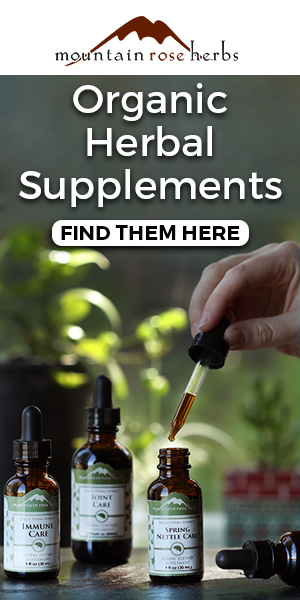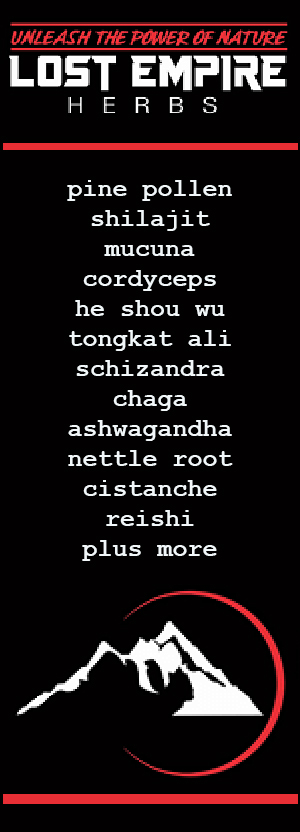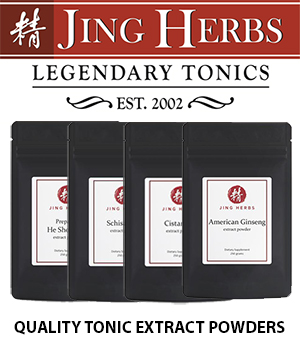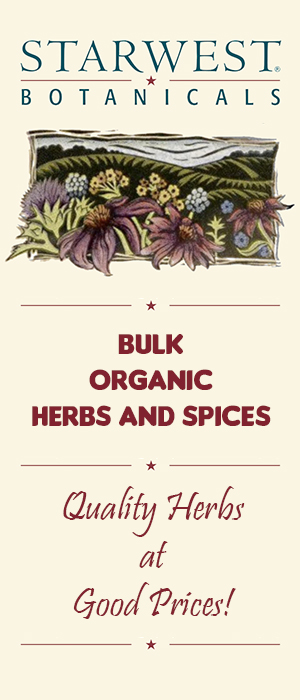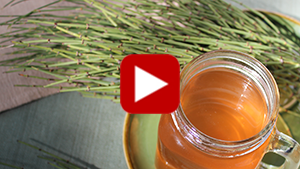- Home
- Wild Plant Foods
- Mormon Tea
Mormon Tea, Harvesting Wild Ephedra and Its Folk Traditions
What is Mormon Tea? | 6 Folk Uses | About Ephedrine | How to Identify | How to Harvest and Dry | How to Make Tea | Precautions
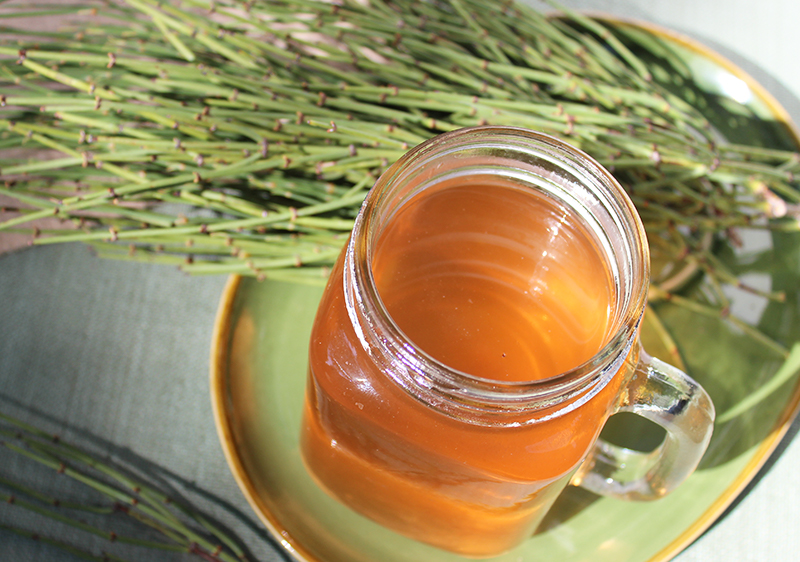
Mormon tea is the term often used to describe certain wild Ephedra plant species that grow in the Southwestern U.S. It is likewise the name used when referring to the beverage made from the dried stems.
The plant is said to have received its title from Mormon pioneers who harvested and used the herb for a number of purposes. One specifically was as an energizing substitute for coffee or caffeinated tea, which are technically banned in their religion.
Table of Contents
What is Mormon Tea? | 6 Folk Uses | About Ephedrine | How to Identify | How to Harvest and Dry | How to Make Tea | Precautions
When most people make reference to "Mormon tea", or sometimes called "Brigham tea", they usually mean the varieties native to southwestern deserts of the Great Basin and Four Corners region. Some of which are locations where Mormons first settled.
There are close to 65 species of Ephedra worldwide, but only several related varieties that are most popular for use as a simmered tea.
This list includes but is not exclusive to:
- Ephedra nevadensis
- Ephedra viridis
- Ephedra funerea
- Ephedra antisyphilitica
- Ephedra californica
- Ephedra cutleri
These
types of ephedra are also called "Indian Tea" because of their use by
many indigenous cultures who also harvested and utilized the plants for
similar herbal uses as well as to brew a stimulating drink.
Found growing next to other desert herbs and foods like chaparral, juniper, prickly pear and mesquite, some species like Ephedra nevadensis are foraged by wildlife like mule deer, pronghorn and desert bighorn sheep.
It is also
used as an ornamental species in desert-conductive landscapes because
of its attractive upright appearance. From a distance, its vertical
stemmed look might resemble the horsetail plant, but it is unrelated.
However, the primitive ancestors of the Ephedra plant, like horsetail, have a long evolutionary history dating back millions of years.
For
those who have access to this potent wild herb, the slender stems can be
harvested, dried and prepared as a hot brewed tea. (More on this below.)
The taste of Mormon tea has a mild sweet flavor and to most people is
quite delicious.
We personally have a special interest in including wild herbs and foods in our diet when they are available from natural landscapes we live in or travel to. Not only are they rewarding to harvest, but likewise add untamed wild elements that we believe can impart their own set of benefits.
Various Ephedra species can have different chemical compositions and
qualities, but all contain some degree of alkaloids and tannins. Those
are the constituents responsible for this herb's different attributes.
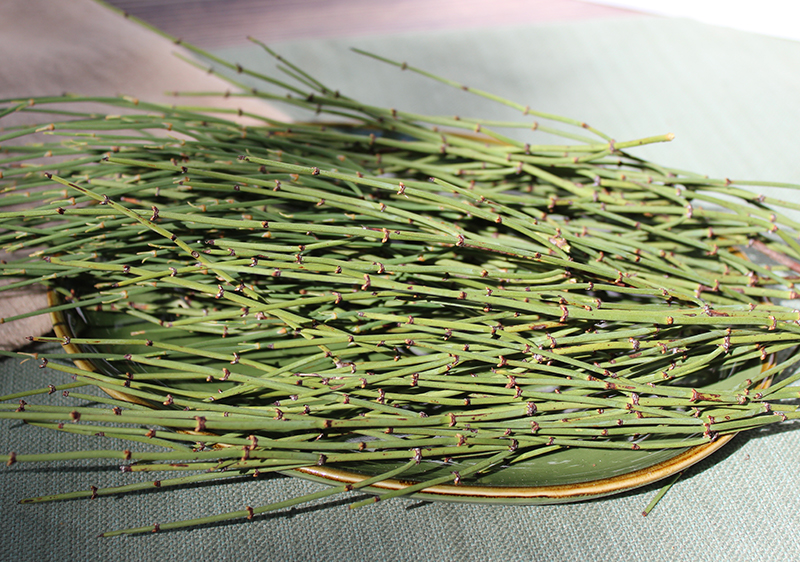
List of 6 Mormon Tea Folk Uses
1) Respiratory Conditions - Ephedra tea is especially known for its proposed affinity for opening up the lungs and fostering respiratory health.
2) Energy Stimulant - It has long been utilized for its energizing properties as a non-caffeinated nervous system stimulant. It maintains a reputation for keeping one awake and alert. Sometimes called "meditators tea", it can encourage sharpened awareness as well as assist deep breathing.
3) Decongestant - Tannins in the tea have astringent properties which can be useful for drying up mucus. Alkaloids like pseudoephedrine and others provide decongestant qualities which might explain its folk use as a cold remedy.
4) Appetite Suppressant - Famous for its use as an appetite suppressant, hence its past utility for weight loss, it is likewise reported to help stimulate one's metabolism.
5) Venereal Issues - In our research, we repeatedly came across its historical use for venereal diseases, such as syphilis and gonorrhea. Some references said it was also at one point called "whorehouse tea" by early pioneers for this reason.
6) Kidney Tonic - There are unscientific reports claiming that it is useful as a cleansing kidney tonic and influential at protecting against kidney infections.
Ephedrine and Ephedra Supplements Vs Mormon Tea
There are also Chinese Ephedra species that have been used in TCM for many centuries. The main one is Ephedra sinica, also called Ma Huang.
This is the specific species known to contain high amounts of the controversial ephedrine alkaloid compound which is alleged to have amphetamine-like properties.
Ephedrine and pseudoephedrine have been synthetically isolated from the Ma Huang variety and were once widely used in the pharmaceutical industry in certain over-the-counter decongestants, cold, asthma and allergy medications.
Both ephedrine as well as ephedra concentrates have also been utilized in dietary supplements (often with caffeine) for athletic performance enhancement and weight loss. (*) However, in 2004 supplements containing ephedrine alkaloids were banned in the U.S. by the FDA because of their potentially dangerous health risks.
There is no arguing that Mormon tea does contain alkaloids but there is of course a big difference between consuming a whole plant as an herbal tea versus the synthetic isolate known as ephedrine or the Ephedra sinica concentrate found in supplements.
The type of ephedra called Mormon tea, that grows in the American Southwest, is believed to contain little to no ephedrine content but contains related alkaloids and trace amounts of pseudoephedrine. There is some loose scientific data suggesting that some species are free of the main primary alkaloids.
According to our research, there have been no reported negative side effects of drinking Mormon tea. It is, however, always good to use this potent herb wisely. Ephedra-sourced herbal tea is not to be used in large amounts or intended for regular use.
This is also the customary approach in TCM when using Ma Huang (Ephedra sinica) in herbal formulations.
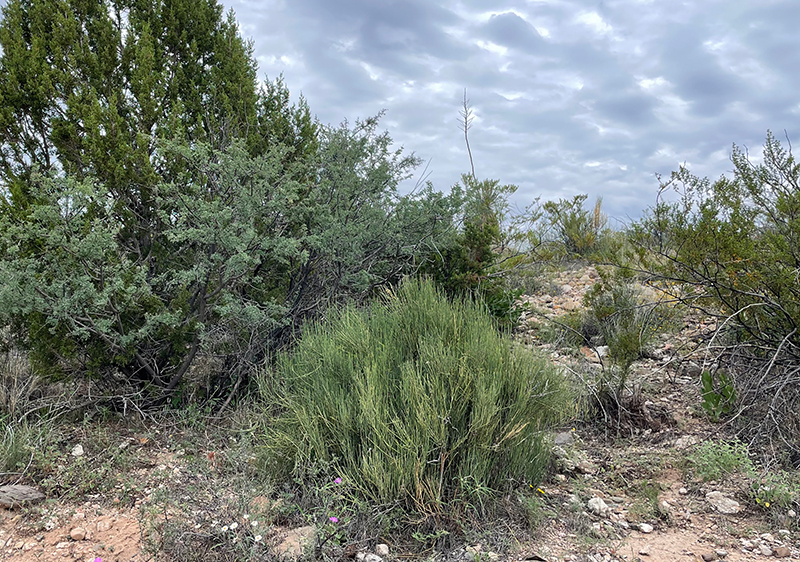
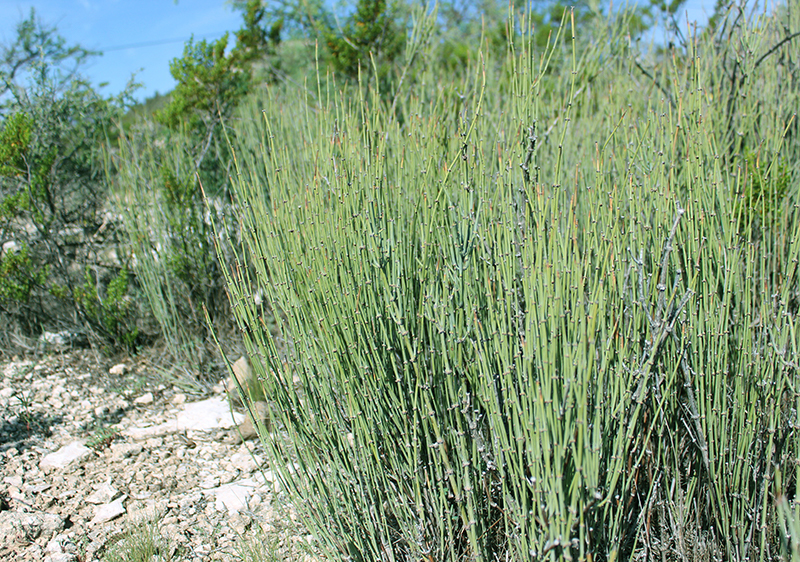
How to Identify
Depending on the species it can grow at a 3,000–7,500 feet (900–2,300 meters) elevation range. Some Ephedra also grows in the temperate mountains and coastal regions of California and Oregon.
Ephedra plants in southwestern desert locations of the U.S. are generally low-growing shrubs usually not more than 3-4 feet tall. They are recognizable by their many erect yellow-green twig-like branches that come off of a woody base.
The stems are segmented with sometimes tiny vestigial leaves at the node sections which have a dark color. Male or female cones will eventually grow off of these nodes.
If you are unfamiliar with this species, it is essential that you use a wild identification guide before you collect and consume it. Many wild plants are toxic and even deadly, so it’s good to err on the side of caution when wildcrafting any herb or food.
How to Harvest and Dry
Ephedra stems are usually harvested in the mid to late summer months. Find a location that is noticeably abundant in ephedra shrubs, away from polluted areas or roadsides.
- With a pair of sharp clippers cut the green healthy stems about 8 inches from the top.
- Take your harvest home and allow it to dry in its whole state for 3 days.
- Next, cut up your stems into inch-size pieces and place on a drying rack or dehydrator tray and dry until brittle. (They may turn a yellow-green or brown color when dried.)
- Store in an air-tight container for occasional use when you want an energizing tea or medicinal brew.
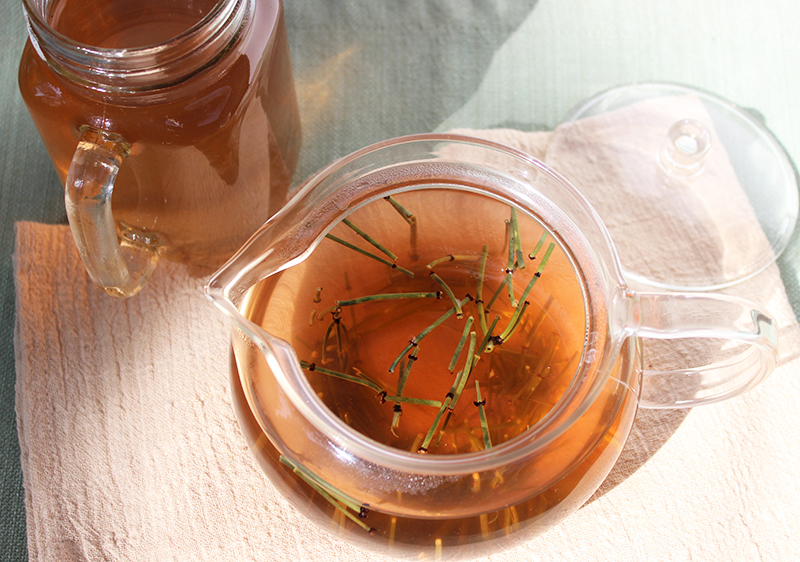
How to Make Mormon Tea
When preparing Mormon tea, it is best to thoroughly dry the herb before use rather than use the fresh plant.
You can infuse the dried stems in hot water but traditionally it is simmered for a few minutes until the water turns color.
In the book "Temalpakh, Cahuilla Indian knowledge and usage of plants" it was referenced that the tea was prepared by boiling the twigs in water until a wine-colored brew was achieved.
Because of its drying qualities, we also blend in a small number of demulcent herbs, like marshmallow root, when making the tea. Adding cinnamon and licorice root is also customary when making traditional Ma Huang tea for respiratory uses.
We generally use about 1-2 teaspoons of dried ephedra stem pieces for one cup of hot water. This recipe can, however, be adjusted to your own personal taste or health goals.
Likewise, we know others who use the ground powder of the plant, but this could yield a stronger stimulating influence that may not be preferred.
Again, it is important to use this herb wisely and in moderation, not for extended periods.
Precautions:
Mormon tea should not be used during pregnancy or when nursing. The ephedra herb contains potent tannins and alkaloids that can cause unwanted side effects with excessive use. It is best not to consume Mormon tea with other caffeinated beverages. Consult your health professional prior to use if you are taking any medications. It is best avoided if you have a serious health condition.
Shop Related Products (About Affiliates & Amazon Associate Paid Links)
Affiliate Disclaimer: This section contains affiliate product links. If you make a purchase through our recommended links, we receive a small commission at no additional cost to you. Thanks for the support.
